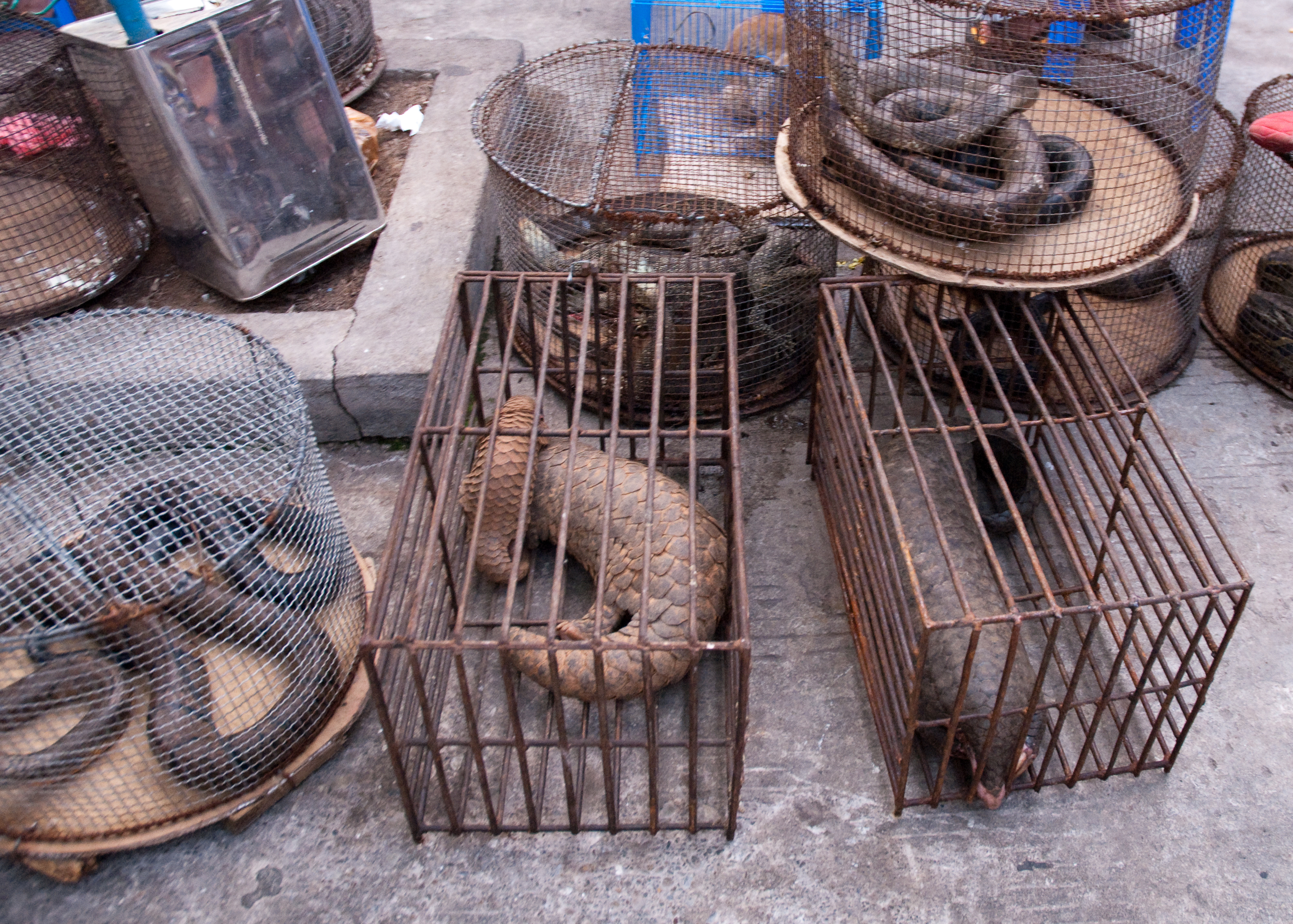Wildlife Trafficking
Pangolins are largely considered the most trafficked animal in the world, with few wildlife trafficking atrocities comparing to the current crisis. Their meat is considered a delicacy throughout Asia and is often eaten by wealthy individuals attempting to impress. Even more valuable is their scales, believed to be a miracle cure for many illnesses. These scales are known to cost millions when in large quantities, adding to their desirability One such seizure, recorded to be one of the largest in recent years, was caught leaving Nigeria and valued at around 39 million dollars. The black market has become to most effective way of trafficking these animals and getting them to the consumer (Thebault).

A shipment of pangolins intercepted in Nigeria, said to be worth 38.9 million dollars. This is one of the largest in recorded history. Source: Washington Post: Paul Hilton
As poaching has been conducted without regards for population numbers, the Asian populations of pangolins have become virtually nonexistent. This has caused poachers to target the slightly more plentiful African populations of pangolins (Aisher 321). With these continued anthropocentric demands for pangolin body parts, trafficking is not slowing down and prices for black market products is still on the rise. In one study, during a five-year period from 2010-2015, 65 pangolin seizures took place in Zimbabwe. This number of seizures increased over the five years, giving way to a pattern of increases in poaching (Shepherd).

One of the largest pangolin seizures in Indonesia. Source: BBC Earth: Paul Hilton
The physical process of trapping and transporting pagolins is extremely stressful and often results in their death. While in captivity, our inability to provide a viable food source and the overall stress of being captive often result in the slow death of most trafficked pangolins, causing the prices of live ones skyrocket. Most often, tons of froze pangolins are transported in ship loads, with snakes mixed in in an attempt to disguise the load. Those at the front lines trapping these small armored creatures are not always the villains they are portrayed to be. More often than not they are just men trying to feed their families. They now what they are doing is not right and they are willing to face the prospect of immense fines and jail time if it means keeping their children form starving (Sutter).

A pangolin in a cage: the way they are often transported when alive. Source: open source Wikipedia
Works Cited
Thebault, Reis. “The World’s Most-Trafficked Mammal May Also Be Its Most Obscure – and Agents Just Found 14 Tons.” The Washington Post, WP Company, 10 Apr. 2019, Aisher, Alex. “Scarcity, Alterity and Value : Decline of the Pangolin, the World’s Most Trafficked Mammal.”Conservation and Society, vol.14, no. 4, 2016, pp. 317-329.
Shepherd, Chris R., et al. “Taking a Stand against Illegal Wildlife Trade: the Zimbabwean Approach to Pangolin Conservation.” Oryx, vol. 51, no. 02, 2016, pp. 280–285.
Sutter, John D. “The Most Trafficked Mammal You’ve Never Heard of .” CNN, Cable News Network